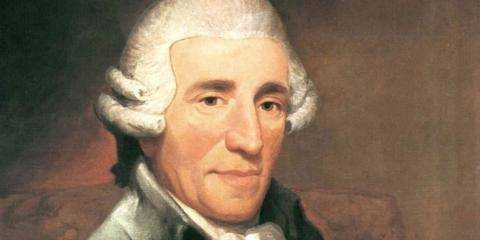Flute & Harp can be heard on Thursday 12 September at Hawthorn Arts Centre and Sunday 15 September at Melbourne Recital Centre.
Carl Philipp Emanuel Bach (1714 – 1788)
Symphony in E flat major Wq179
I. Prestissimo
II. Larghetto
III. Presto
Carl Philipp Emanuel Bach (1714–1788), the second surviving son of JS Bach and his first wife Maria Barbara, was an important and influential composer of the second half of the eighteenth century, composing more than 1000 works including songs, oratorios, keyboard dance movements and sonatas, concertos and symphonies.
The catalogue of CPE Bach’s works lists eighteen symphonies composed over a period of thirty-five years. Nine of these symphonies (Wq 173–181) date from his time in Berlin between 1738 and 1768. He later revised these works and added wind instruments. The Symphony in E flat, composed in 1757, is a masterful showpiece. The opening Prestissimo is built on ascending arpeggios with dramatic plunges over a few octaves conveying a sense of intense agitation. The Larghetto is a gently expressive movement with materials passed among the instruments. The work ends with the Presto which is built on a hunting horn-like melody that is varied through the short course of the movement.
Wolfgang Amadeus Mozart (1756 – 1791)
Concerto for Flute, Harp & Orchestra K297c
I. Allegro
II. Andantino
III. Rondeau: Allegro
In 1777 Wolfgang Amadeus Mozart (1756–1791) left Salzburg to attempt to secure a permanent court position. He spent some months in Mannheim and then seven months in Paris where the Concerto for Flute and Harp was composed in Paris; it is the last of a series of works that he wrote for flute and the only work he wrote for the harp. The unusual combination of instruments came about as the result of a commission from the Comte de Guines, Adrien-Louis Bonnières de Souastre, an amateur flautist. His daughter, Marie-Louise-Philippine Bonnières, a harpist, was taking composition lessons from Mozart. The composer was never paid for the commission.
The concerto is scored for an orchestra of two oboes, two horns, and strings, and is in many ways in the style of an intimate sinfonia concertante with the constant interplay between the solo instruments and the orchestra. The opening Allegro is in sonata form with the two contrasting themes introduced by the orchestra prior to the entry of the soloists. A sense of joy pervades this movement. The Andantino is an elegantly playful interplay between the flute and harp. The finale Rondeau: Allegro takes us on a spirited journey through a series of themes to a brilliant conclusion.
Nicholas Buc
Yackandandah Music
Nicholas Buc is a composer, conductor and arranger. As the recipient of the Brian May Scholarship, he completed a Master’s degree in Scoring for Film and Multimedia at New York University, receiving the Elmer Bernstein Award for Film Scoring.
He has composed music for film and television, with some of his work being screened at festivals and theatres around Australia, Asia and the US. His commissioned works have been premiered by the Royal Melbourne Philharmonic Orchestra and Choir, The Australian Voices, and the Melbourne Chamber Orchestra.
Nicholas has worked with Wynton Marsalis and the Jazz at Lincoln Center Orchestra, Chris Botti, Amanda Palmer, Ben Folds and was conductor/arranger for Tina Arena on six Australian tours. He has written arrangements for Missy Higgins, Passenger, Eskimo Joe, and The Whitlams, as well as working on five seasons of The Voice Australia.
Continuing his passion for music and film, in 2018 he joined forces with the Tokyo Philharmonic to conduct all 3 original Star Wars films in one day, and in 2019 conducted the world premiere of Disney’s live action remake of The Lion King.
The composer writes:
Yackandandah Music is in essence a journey through the history of the Victorian town. Acknowledging the traditional owners of the land (Yackandandah is Jiatmathang country), it begins with a depiction of serence stillness that soon turns into the dreamy optimism of European settlement. The discovery of gold in 1852 is marked by an up-tempo jig, heralding in a time of remarkable growth and transition for the new community. From here, the music is constantly on the move, singposting the effects of economic change, the great depression, and multiple wars. Ultimately though, it is the overarching sense of belonging that prevails, leaving Yackandandah as a strong, tightknit community looking to the future.
Franz Joseph Haydn (1732 – 1809)
Symphony No 43 in E flat major Mercury
I. Allegro
II. Adagio
III. Menuet & Trio
IV. Allegro
Joseph Haydn (1732–1809) is often considered the “father of the symphony”. His 104 symphonies provide immense insight into the development of the form that was taken up by Mozart and Beethoven and composers through history. In 1772 Haydn completed Symphonies 43 to 47: it was likely that each of the works were premiered at Esterháza. As with many of his works nicknames were later attached by publishers or concert presenters. The name “Mercury” has been attached to Symphony No 43 since the nineteenth century.
The work is scored for two oboes, bassoon, two horns and strings and is organised in four movements. The opening Allegro is dominated by the long meandering main theme. Throughout there is a persistent drive that moves the music. The Adagio is dominated by the strings; the main theme evolves and develops through the movement. The third movement is in the character of a Ländler (folk-dance) with a contrasting graceful trio section. The Allegro finale features an extended theme made up of irregular phrases.
David Forrest

